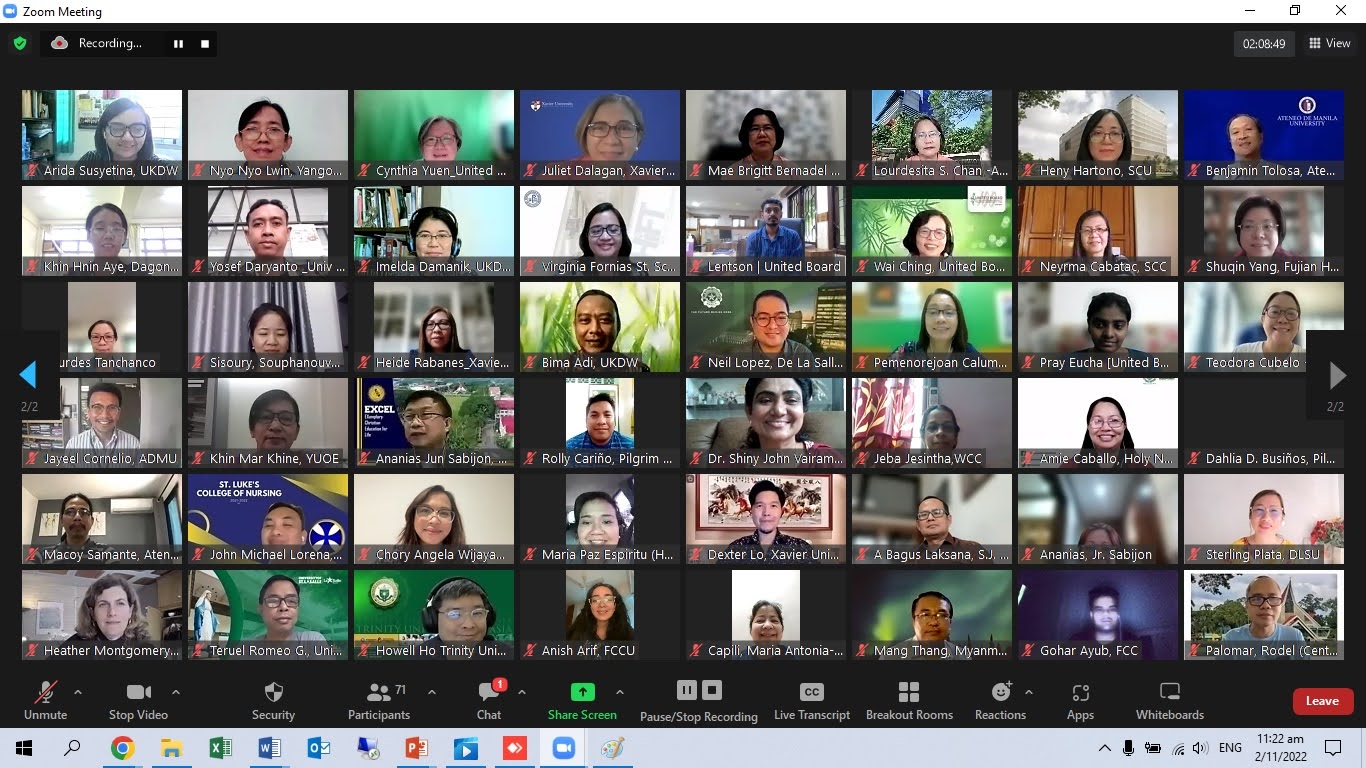A Balancing Act Made Easy

Teachers teach. Researchers do research. Academics teach, do research and, in addition, perform services to their institutions or communities. This tripartite portfolio is the expected competences of educators. However, balancing these three functions can be challenging especially in view of the different emphases placed by different institutions (e.g., more research to meet ranking needs) and other administrative tasks given to educators. It is therefore of vital importance that institutions sustain their academic staff through faculty development.
The United Board organized the Scholars Symposium and the Faculty Development Forum in 2022 to address these seemingly competing functions demanded of academics. Speakers at these virtual events highlighted the ‘Integrated Scholarship’ approach to research, teaching, and service.
“For the United Board, a whole person scholar is one who can integrate the three functions of discovery (or research); dissemination (or teaching), and service (or application),” said Dr. Hope Antone, Director of Faculty Development of the United Board, “Keeping them connected and mutually enriching constitutes a hallmark of whole person education.”
At the Scholars Symposium on 7 September 2022 titled ‘Integrating Research-Teaching-Service: Finding Balance’, Dr. Spencer A. Benson, founder and director of Education Innovations International Consulting, spoke of the need to balance the three functions of teaching & mentoring, research, and service. He affirmed that the primary mission of a university is teaching and mentoring. Unfortunately, research is often seen as what counts the most since its purpose is to promote the university through ranking. Moreover, while service is expected, it is often not recognized or rewarded.


To survive and thrive, or to go from struggling to balancing the three functions, a member of academia has to see the connections and not the disparateness among them. The trick is therefore not to treat them as distinct responsibilities that need to be dutifully performed one after the other but as connected programs or activities where resources can be leveraged and outputs shared.
Always succinct in presentation and practical in approach, Dr. Benson then offered up some tips for making those connections cost-effectively. For example, Teaching and Research can be connected by making one’s research part of the course contents and having students work in the research team. Similarly, Research and Service can be connected by joining a research collaboration within and outside one’s department and getting involved with community service related to one’s research interest, and Teaching and Service can be connected by integrating service learning into a course.
With the help of Dr. Enrique Oracion, director of research and professor of anthropology and sociology at Silliman University, the United Board conducted in 2021 a survey of faculty development practices to understand how institutions hone their faculty members’ competences in research, teaching, and service. Seventy-one respondents from 46 institutions had participated. The results were presented by Dr. Oracion in the first part of the Faculty Development Forum on 2 November 2022 under the theme ‘Challenges and Practices of Integrated Scholarship in Asian Higher Education’, which showed that teaching received slightly more attention in the institutions’ capacitation and professional advancement activities; research received more attention through the provision of incentives; while service got the lowest attention.

While it may not be possible to have an equally balanced proportion of teaching, research, and service, Dr. Oracion suggested that a meaningful infusion of research outputs into teaching and community service may subsequently flow back to enrich teaching quality. Service learning, he concluded, is a good platform for enabling students to participate in research, teaching and service in the wider community.
In the second part of the Faculty Development Forum, Dr. Gray Kochhar-Lindgren, director of the Common Core of the University of Hong Kong, used the Möbius Strip—a topological model that makes no distinction between beginning and end and between surface and inside—as an image for integrated scholarship that weaves together what looks like different things but with coalescing moments. He described integration as an ongoing navigation within the university in multiple scales, and the pathways leading in and out of the university. Therefore, integrating teaching, research, and service involves thinking with all the constituents—faculty members, administrators, students, and partners.

Integration does not necessarily mean having the three functions in equal shares, as educators have different areas of interest and levels of capacity. But they need to enhance their capacity across these areas as they move through life, Dr. Kochhar-Lindgren stressed. He pointed to the university’s mission—whole person education in any language—as a compass and leverage for integration and change. Integration means moving away from disciplinary silos, and realizing that today people, scholars included, inhabit a networked world.
Recent and current scholars of the United Board Faculty Scholarship Program attended the virtual Scholars Symposium while institutional representatives attended the Faculty Development Forum.

‘Following the success of these talks, the United Board will soon launch a faculty development grant program on “Integrated Scholarship Addressing the Sustainable Development Goals” for institutions to demonstrate their commitment to enabling their faculty to keep a good balance and make fruitful connections of teaching, research, and service,’ said Dr. Antone.
